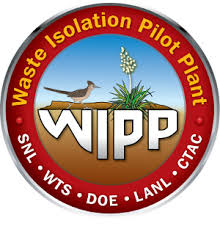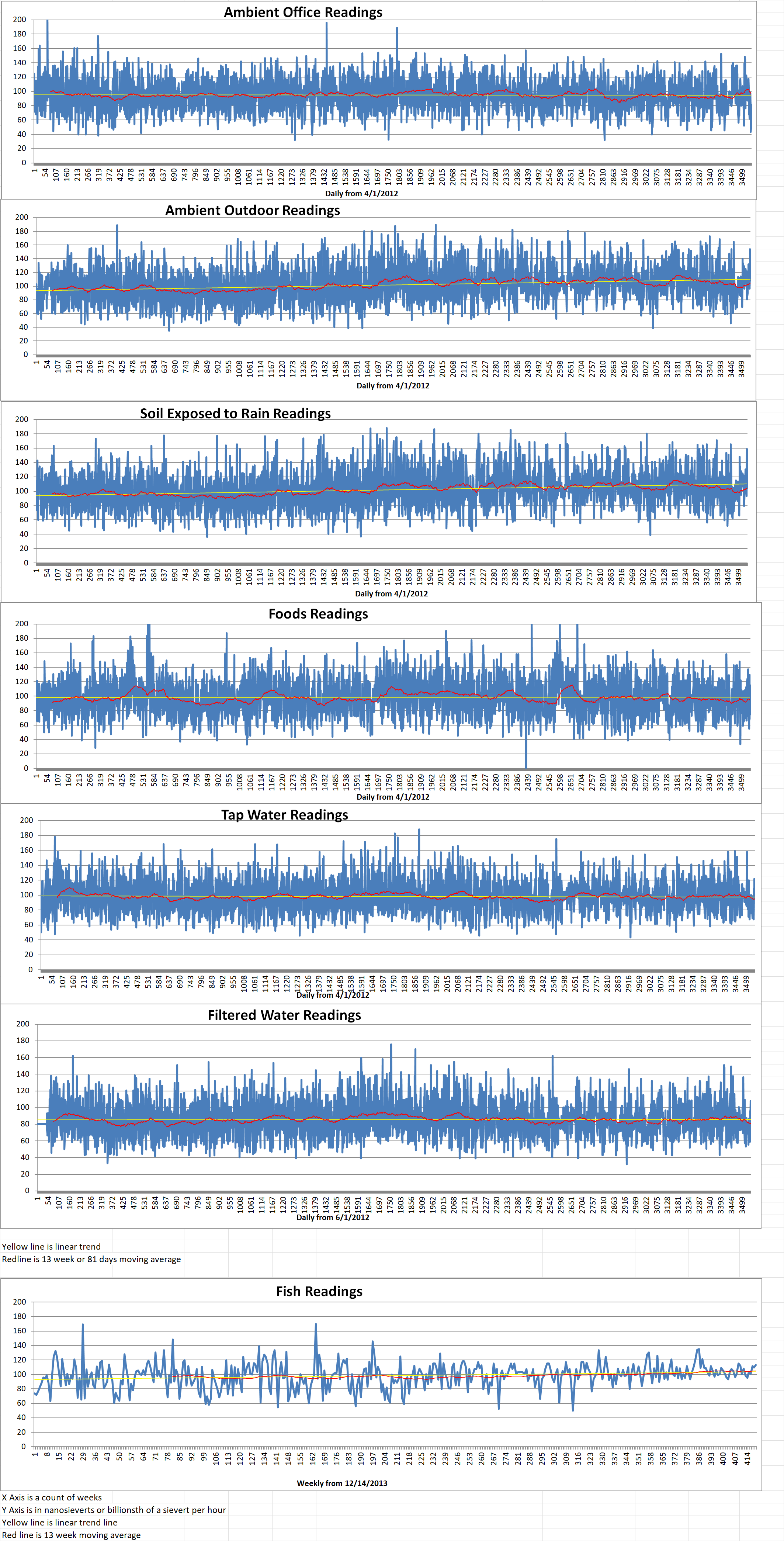Blog
-

Geiger Readings for Mar 15, 2022
Ambient office = 88 nanosieverts per hour
Ambient outside = 114 nanosieverts per hour
Soil exposed to rain water = 116 nanosieverts per hour
Blueberry from Central Market = 105 nanosieverts per hour
Tap water = 104 nanosieverts per hour
Filter water = 93 nanosieverts per hour
-

Radioactive Waste 846 – General Accounting Office Publishes A Report Critical Of Work At Waste Isolation Pilot Plant
The Waste Isolation Pilot Plant (WIPP) is located in southern New Mexico. It is the only underground nuclear waste repository in the U.S. It is intended primarily for waste generated in research and construction of nuclear weapons. The U.S. General Accounting Office just issued a report that the U.S. Energy Department is not required to develop a corrective action plan for addressing the root causes of the challenges at the WIPP. The report states that there is no way of knowing if cost increases and missed construction deadlines will continue at the WIPP.
A multimillion-dollar project is underway at the WIPP to install a new ventilations system. When completed, full operations can resume. After a release of radioactive materials in 2014, the WIPP was closed for three years. Then operations were throttled back because parts of the facility were still contaminated, and airflow was reduced.
Federal officials have claimed that the construction project will ensure that the WIPP can meet the Energy Department’s need to dispose of tons of Cold War-era waste left behind by decades of bomb making and nuclear research. However, the GAO report stated that the Energy Department faces construction and regulatory risks that might delay its schedule.
According to Energy Department documents, the ventilation project was estimated to cost about half a billon dollars. This is seventy percent over the original estimate. The project is also about three years behind schedule. The new estimation for the completion date is January 2026. The Energy Department had blamed significant cost overruns on the inexperience of the contractor and problem attracting workers to the area which is an expansive desert that is also home to one of the most productive oil fields in the world.
While some corrective measures were taken, Energy Department officials told the GAO that they have not updated an internal system that is meant to track risks and mitigation measures. Without regular updates from the internal system, Energy Department officials may not be able to meet their disposal schedule. This could result in shipping delays and cost increases for the sites that are generating the waste.
The report repeated that the WIPP is running out of space for waste and that the Energy Department has a large amount of “transuranic waste.” This typically consists of lab coats, rubber gloves, tools and debris contaminated with plutonium and other radioactive elements from sites around the country that are still waiting for disposal.
The WIPP was excavated out of an ancient salt formation about half-mile below the surface. The facility was constructed with the understanding that the shifting salt around the depository would eventually entomb the radioactive waste.
The current layout includes eight large rooms known as panels. The Energy department estimates that these will be filled by 2025. There are plans to excavate two new panels in the near future. The report noted that it is unclear whether the new space will be ready in time to prevent an interruption of disposal operations.
New Mexico regulators have yet to approve permit changes and other requests from the Energy Department. It is not clear how long this will take.
Responding to the GAO report, Energy Department officials agreed with the recommendations aimed at addressing the root causes of the cost increases and construction delays to ensure that “that DOE projects benefit taxpayers while reducing the risk to human health and the environment.”
Nuclear watchdog groups have been very critical of the Energy Department. They have voiced concerns about the future of the WIPP. They cite the increase in defense-related waste that will need to be disposed of when production of key components for the country’s nuclear arsenal ramps up at the Los Alamos National Laboratory in New Mexico and the Savannah River Site in South Carolina. -
Nuclear News Roundup Mar 14, 2022
Britain’s nuclear bunkers exposed – 258 havens primed across UK if Russia war escalates express.co.uk
Russia says it has received US guarantees over Iran nuclear deal Aljazeera.com
Efforts continue to restore power to Chernobyl world-nuclear-news.org
State Dept says Iran nuclear deal will not be an ‘escape hatch’ for Russian sanctions foxnews.com
-

Geiger Readings for Mar 14, 2022
Ambient office = 116 nanosieverts per hour
Ambient outside = 77 nanosieverts per hour
Soil exposed to rain water = 79 nanosieverts per hour
Avocado from Central Market = 99 nanosieverts per hour
Tap water = 80 nanosieverts per hour
Filter water = 73 nanosieverts per hour
-
Nuclear News Roundup Mar 13, 2022
Rolls-Royce SMR design accepted for review world-nuclear-news.org
France sees new nuclear reactors going online by 2035-37 reuters.com
US programme supports Ghana nuclear progress world-nuclear-news.org
Nuclear waste shipment touches down safely in Australia abc.net.au
-

Geiger Readings for Mar 13, 2022
Ambient office = 81 nanosieverts per hour
Ambient outside = 73 nanosieverts per hour
Soil exposed to rain water = 71 nanosieverts per hour
Tomato from Central Market = 136 nanosieverts per hour
Tap water = 152 nanosieverts per hour
Filter water = 138 nanosieverts per hour
-
Nuclear News Roundup Mar 12, 2022
Putin’s Nuclear Threats a Reminder of the Urgency of Disarmament hnn.us
TerraPower receives $8.5M grant to explore recovering uranium from used nuclear fuel oilcity.com
NPPD and Entergy end partnership on Cooper nuclear plant in Brownville journalstar.com
Iran’s foreign minister in Moscow, hopes for Russian support for nuclear deal -ISNA reuters.com
-

Geiger Readings for Mar 12, 2022
Ambient outside = 126 nanosieverts per hour
Soil exposed to rain water = 120 nanosieverts per hour
Romaine lettuce from Central Market = 108 nanosieverts per hour
Tap water = 95 nanosieverts per hour
Filter water = 81 nanosieverts per hour
Dover sole = 1130 nanosieverts per hour
-

Nuclear Fusion 170 – Marvel Fusion Betting On Laser Approach To Fusion.
Marvel Fusion was founded in 2019. It is one of many startups trying to develop commercial nuclear fusion power reactors. The German company is utilizing an innovative approach that employs lasers instead of magnets. So far they have raised seventy million dollars. They are still years and billions of dollars away from even constructing a prototype. The company is testing their design using computer modeling and believes that its approach will be more efficient than competing efforts.
There are two approaches being employed by companies trying to develop commercial fusion. These are magnetic confinement and inertial confinement.
Magnetic confinement often uses a tokamak which is a round donut shaped device with super strong magnets to confine the plasma so a fusion reaction can take place. It is a more popular choice than inertial confinement with a number of startups and a huge international collaboration in France all chasing it.
Inertial fusion confinement takes place when the fuel is compressed so intensely and quickly that it reaches the conditions necessary for fusion. Extremely powerful lasers are usually used to compress and ignite the fuel.
Sehila M. Gonzalez de Vicente is a nuclear fusion physicist at the International Atomic Energy Agency. She told an interviewer that “The Tokamak concept based on magnetic confinement is the most advanced fusion device. Nevertheless, laser-based concepts also represent a promising approach.
Marvel’s approach is for the lasers to directly impact the fuel capsule. Moritz vol der Linden is a cofounder and CEO at Marvel Fusion. He said that direct drive is more efficient than the alternative which is called indirect laser fusion. He noted that, “We need considerably less energy to ignite and burn our fuel than comparable thermonuclear models that rely on high temperatures.”
Linden spent twenty years in finance and technology. His previous work included collaboration with a physicist named Karl-Georg Schlesinger to do due diligence on another fusion company. They decided that that approach was not practical but were inspired by that work to found Marvel Fusion.
The Marvel Fusion design depends on advanced lasers. Linden claims that their lasers are twenty years ahead of the lasers being used by the National Ignition Facility at Lawrence Livermore National Laboratory in California.
Marvel Fusion plans to use hydrogen-boron 11 as the fuel. This fuel results in less waste than the deuterium-tritium fuel used in more conventional fusion devices. In the primary fusion reaction, helium nuclei will be the only by product. In one tenth of one percent of all the fusion reactions, a small number of fast neutrons are produced. Although these fast neutrons are responsible for radioactive wastes in conventional nuclear fission reactors, they are not enough to produce any long-lived radioactive wastes, according to Marvel.
Marvel Fusion is still in its early stages and is only a computer simulation at this point. They have not raised enough money to build a prototype. Such a prototype would cost billions of dollars. They hope to have a laboratory test version of their design in five years and a prototype power plant within ten years.
